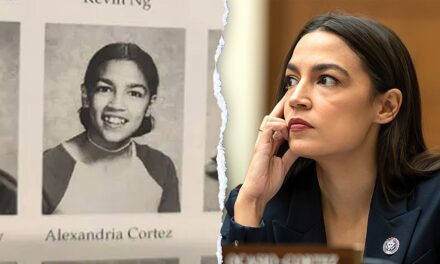The realm of higher education is once again at the forefront of political discourse in the United States as former President Donald Trump vows to implement significant changes that could dramatically alter the financial landscape for colleges and universities nationwide. These institutions, which have long been significant beneficiaries of federal dollars, now face a period of uncertainty as discussions around policy shifts heat up. As Trump gears up his political campaigns, his focus on education reform suggests a stringent review of how federal funds are distributed, signaling a potential shake-up that has administrators on edge.
Colleges and universities across the nation receive billions in federal funding annually, which supports a myriad of operations, financial aid programs, research projects, and other essential services. This funding is a crucial backbone that enables these institutions to function and provide quality education to millions of students. Despite the advantages provided by federal funds, Trump’s critique of how they are managed suggests that changes may be imminent. The impact of any policy shift could be profound, affecting the financial health of higher learning institutions and, subsequently, students’ access to education.
Trump’s proposals suggest reforms that could potentially reduce the amount of federal aid available to colleges, tying the levels of support to measurable outcomes such as graduates’ job placement rates and earnings. The approach appeals to constituents seeking accountability and efficiency in government spending, reflecting a larger trend of performance-based assessment in various federally funded sectors. However, educational leaders argue that such metrics may not fully capture the value of a diverse education that isn’t solely focused on employability.
One of the main sources of federal funding for colleges is through the Department of Education’s Title IV program, which encompasses Pell Grants and Federal Direct Loans. For many institutions, particularly those which do not possess substantial endowments, this constitutes a major portion of their budget. Any reduction or redirection of these funds could lead to increased tuition rates or cutbacks in program offerings, affecting accessibility and affordability for students from low-income backgrounds. Academic leaders caution that the brunt of these changes could fall disproportionately on small, community-focused, or minority-serving institutions, which are integral in promoting educational equity.
The drawdown of resources comes at a time when higher education institutions are still grappling with the challenges spurred by the COVID-19 pandemic. Many have seen disruptions in enrollment patterns and financial stresses exacerbated by the recent economic challenges. In this context, discussing further reduction of federal support amplifies anxieties within academic circles, where leaders acknowledge their dependency on federal funding for operational stability and academic excellence.
Despite these concerns, Trump and his supporters argue that the current federal funding model lacks accountability, claiming that it allows for wasteful spending and does not adequately incentivize institutions to improve student outcomes. Indeed, there have been isolated incidents where funds have been mismanaged, reinforcing the narrative that reform is necessary. However, critics argue that these cases are exceptions rather than the rule and that a more nuanced approach is essential for a fair assessment of federal funding efficacy.
Institutions brace for the implications of potential changes, mindful of the diverse political opinions surrounding this topic. Some educational experts posit that reform may include a more stringent review of for-profit colleges, which have historically faced scrutiny over their reliance on federal aid despite a poor track record in workforce integration. This raises dilemmas in terms of free-market principles versus regulatory oversight, highlighting a long-standing tension in the American education system.
Further adding complexity to Trump’s education agenda is his interest in encouraging the growth of alternative education pathways, such as apprenticeships, vocational training, and innovative credentialing systems. Such pathways are touted as more aligned with workforce needs, appealing to industries struggling with skill gaps and to students seeking cost-effective or expedited routes to employment. However, critics caution that an overemphasis on these pathways might undermine the broad-based educational approach that cultivates critical thinking and civic responsibility.
The ramifications of these proposed changes reach far beyond funding. A potential shift in federal policy has universities considering revising their academic offerings, reevaluating admission strategies, and exploring new funding avenues. Some are preparing for a possible increase in competition for private donations and ramping up efforts to build stronger partnerships with industries to secure alternative funding sources.
The discussions sparked by Trump’s plans have galvanized both support and opposition from different sectors within and outside academia. Some lawmakers call for a balanced approach that maintains support for traditional academic pathways while also recognizing the value of alternative skill-building initiatives. Meanwhile, student organizations and education advocacy groups urge policymakers to prioritize affordability and access, arguing that education is a public good that should not be jeopardized by reduced federal investment.
As the political landscape becomes ever more charged, the future of federal funding in higher education remains uncertain. Educational institutions, policymakers, and students await forthcoming policy directives, remaining hopeful for open dialogue and a comprehensive assessment of the deep and varied needs of the American education system. The stakes are high; how these discussions unfold will have lasting implications not just for colleges and universities, but for the generations of students that they serve.
































